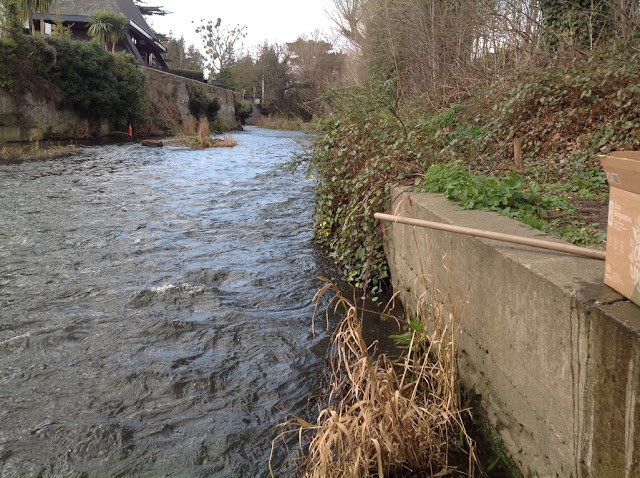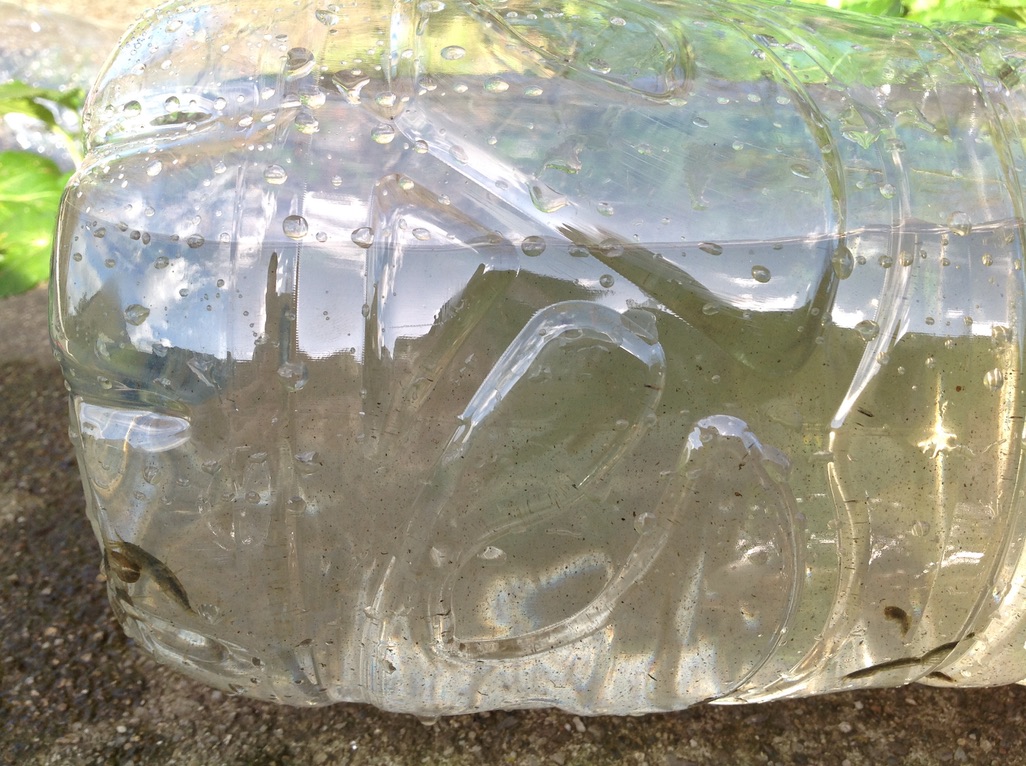1. Collecting Gammarus duebeni celtica
Much of the Tolka in Dublin is channelized with concrete revetments in works done in the 1930s. In Griffiths Park in Drumcondra which is the section after the section chosen, the actual course of the river was diverted into a nice straight line through the park removing the natural meandering of the river. One of the outcomes of this interference was that the straight section is quite poor for biotic sampling. A typical kick-net sample will yield up to 10 Gammarus, whereas in the section illustrated in Glasnevin, you can expect to yield 40+ Gammarus duebeni celtica. The host, Gammarus duebeni celticus is a freshwater shrimp that inhabits Europe's "Celtic Fringe."
A curious feature of D. d. celtica is the infection of D. d. celtica with a microsporidian parasitic fungus Pleistophora mulleri. Even though the host is largely distributed throughout Europe's Fringe, amphipod infection with P. mulleri is localized to certain areas such as Ireland due to P. mulleri's requirement for water with low salinity. Infected amphipods have an increased rate of cannibalism within their communities. When the parasite is present, cannibalism is favored in order to increase transmission rates. Consumption of infected tissue is 23% efficient for transmission.
Strangely, Gammarus is notorious for cannibalism hence the need to segregate size cohorts when in culture situations.

St. Mobhí Drive, Glasnevin, Co. Dublin (coordinates: 53.373220, -6.267171)

Construction of partitioned tanks for segregation of size cohorts in culture using polyethylene boxes with mesh dividers x2 in culture 12 L culture tanks to allow the passage of smaller individuals away from large males. The mesh dividers were "welded" into the tanks with a soldering iron - why not glue or hot-glue gun? The answer is that this introduces a third material to take account of in the toxicology test and possibly have an effect, so the range of materials for construction is kept to a minimum.
Woven Wire 8 Mesh 2.5mm Hole using 0.80mm Wire Diameter - Stainless Steel 304L
Woven Wire 10 Mesh 2mm Hole using 0.6mm Wire Diameter Stainless Steel 304L
These were then placed in the 227 L tanks in a ‘water-bath’ method (effectively floating on the water) and this allowed for easy access to individuals. The water used in the floating tanks was commercial ‘spring’ water to a depth of 0.03 m with aeration at one point. Feed was placed in each of the three compartments. For experimentation, four replicate partitioned floating tanks were prepared.
Plastic "welding" with a soldering iron.


Comments
Post a Comment